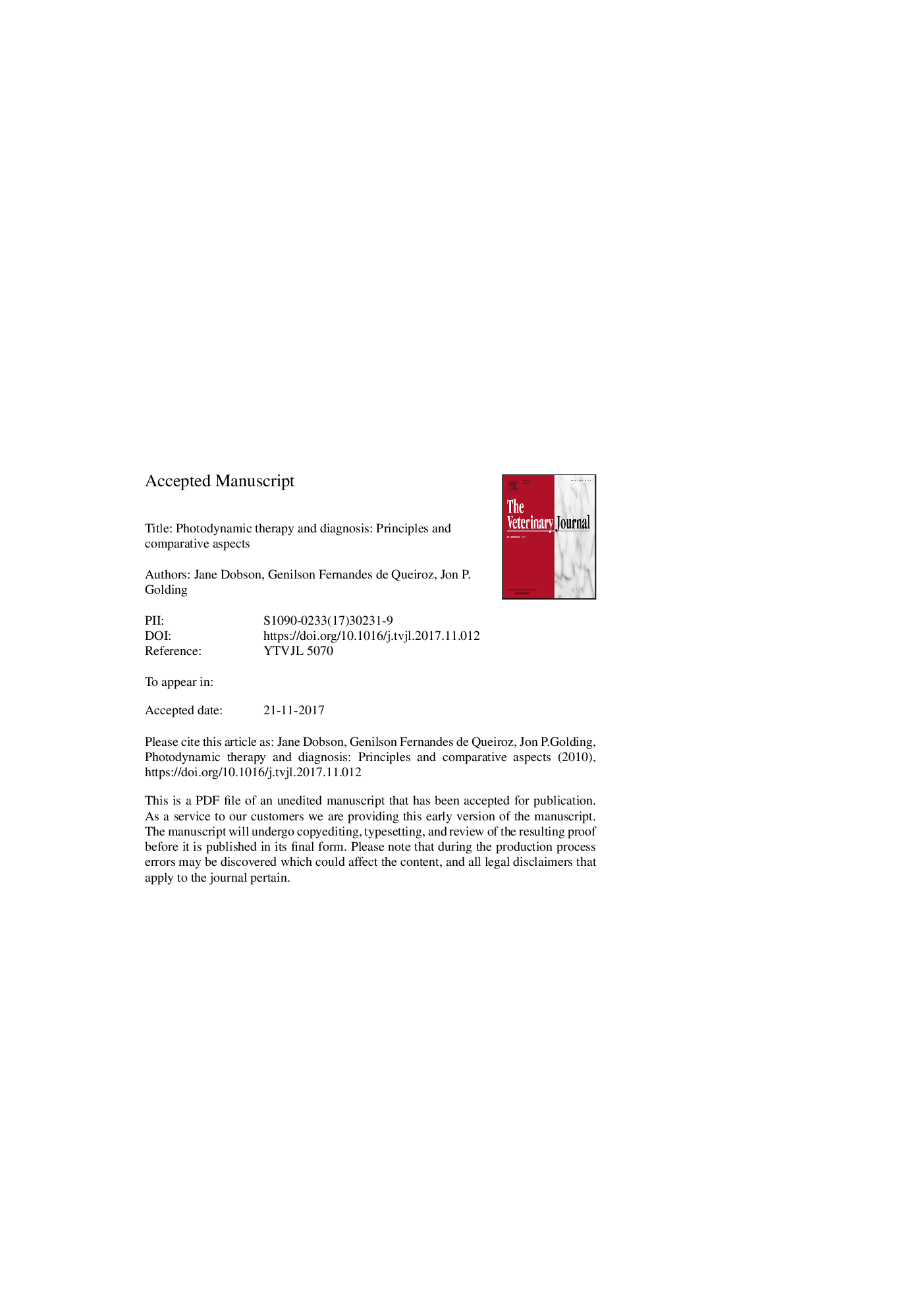| کد مقاله | کد نشریه | سال انتشار | مقاله انگلیسی | نسخه تمام متن |
|---|---|---|---|---|
| 8504907 | 1555210 | 2018 | 38 صفحه PDF | دانلود رایگان |
عنوان انگلیسی مقاله ISI
Photodynamic therapy and diagnosis: Principles and comparative aspects
ترجمه فارسی عنوان
درمان فوتودینامیک و تشخیص: اصول و جنبه های تطبیقی
دانلود مقاله + سفارش ترجمه
دانلود مقاله ISI انگلیسی
رایگان برای ایرانیان
کلمات کلیدی
سرطان، انکولوژی تطبیقی، تشخیص عکس درمان فوتودینامیک، انکولوژی دامپزشکی،
موضوعات مرتبط
علوم زیستی و بیوفناوری
علوم کشاورزی و بیولوژیک
علوم دامی و جانورشناسی
چکیده انگلیسی
Photodynamic therapy (PDT) is an evolving method of treating superficial tumours that is non-invasive and carries minimal risk of toxicity. It combines tumour-selective photosensitiser dyes, tissue oxygen and targeted illumination to generate cytotoxic reactive oxygen species (ROS) within the tumour. In addition to directly acting on tumour cells, PDT damages and restricts tumour microvasculature, and causes a local inflammatory response that stimulates an immune response against the tumour. Unlike surgery or radiotherapy, the surrounding extracellular matrix is unaffected by PDT; thus, tissue healing is excellent and PDT seldom causes scars. This, combined with the ease of light application, has made PDT a popular treatment for cancers and pre-cancerous conditions in human beings. Moreover, because photosensitiser dyes are fluorescent and selectively accumulate in tumour tissues, they can additionally be used to visualise and discriminate tumour from normal tissues, thereby improving the accuracy of tumour surgery. In veterinary practice, PDT has been used successfully for treatment of superficial squamous cell carcinomas of the feline nasal planum; urinary tract, urinary bladder and prostate neoplasia in dogs; and equine sarcoids. The purpose of this article is to provide a comparative review of the current literature on PDT in human and veterinary medicine, and to establish a basis for future development of PDT in veterinary medicine.
ناشر
Database: Elsevier - ScienceDirect (ساینس دایرکت)
Journal: The Veterinary Journal - Volume 233, March 2018, Pages 8-18
Journal: The Veterinary Journal - Volume 233, March 2018, Pages 8-18
نویسندگان
Jane Dobson, Genilson Fernandes de Queiroz, Jon P. Golding,
